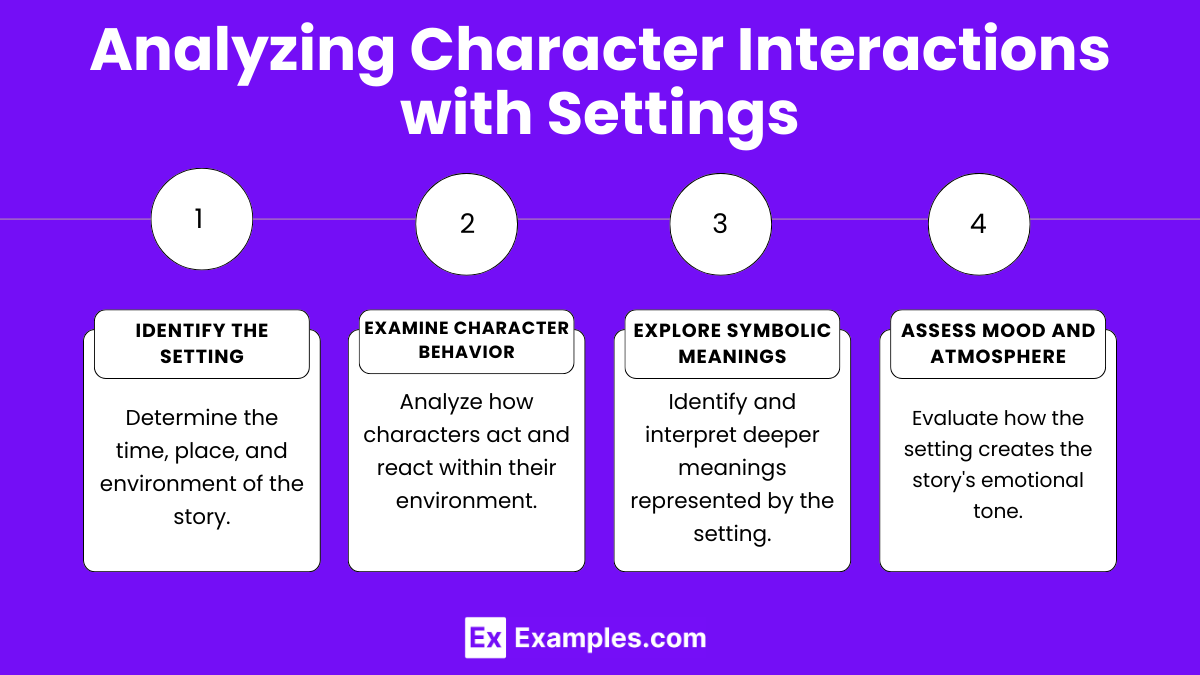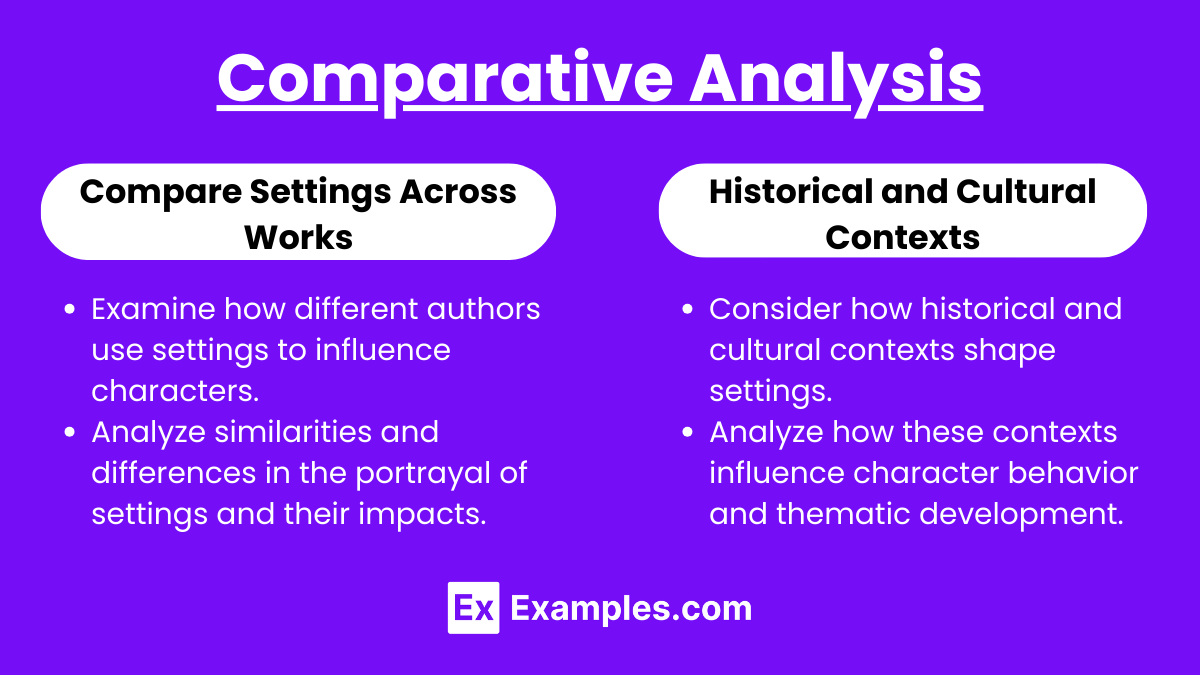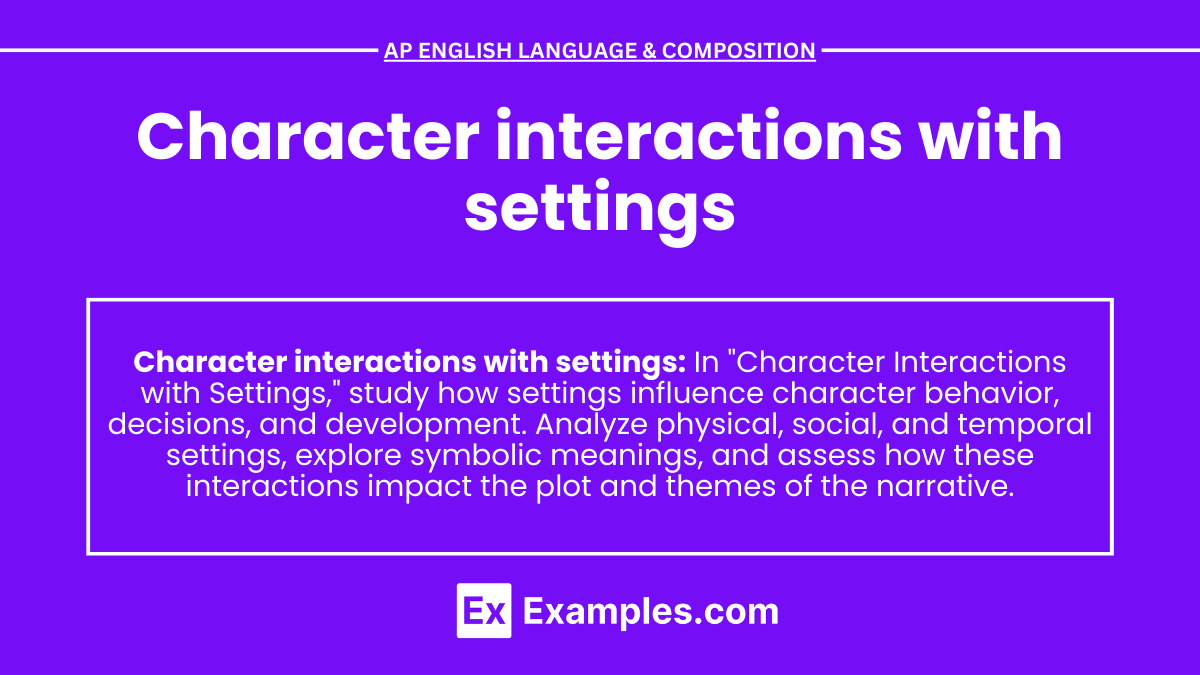In AP English Language and Composition, understanding character interactions with settings is vital for analyzing narratives. Crafting rhetorical sentences and cumulative sentences enhances your ability to explore how environments influence characters in argumentative speech and argumentative writing. By examining these interactions, you can develop compelling arguments and deepen your literary analysis.
Learning Objectives
The learning objectives for analyzing character interactions with settings include mastering the use of cumulative sentences to build detailed analyses, crafting explanatory essays and expository essays to elucidate these interactions, constructing rhetorical sentences for persuasive arguments, formulating a final thesis statement that encapsulates your analysis, and applying critical thinking to explore the significance and impact of settings on character development and narrative themes.
Key Concepts and Techniques
- Definition of Setting
- The time, place, and environment in which a story unfolds.
- Includes physical, social, cultural, and historical contexts.
- Functions of Setting
- Backdrop for Action: Provides context for the narrative events.
- Influence on Character: Shapes characters’ actions, thoughts, and development.
- Symbolic Meaning: Represents broader themes and ideas.
- Mood and Atmosphere: Creates the emotional tone of the story.
- Types of Settings
- Physical Settings: Natural and built environments where the story takes place.
- Social Settings: Social environments, including relationships, social norms, and cultural values.
- Temporal Settings: Historical period, time of day, season, and duration.
Analyzing Character Interactions with Settings

- Identify the Setting
- Determine the key elements of the setting in the narrative.
- Note descriptions, imagery, and sensory details used by the author.
- Examine Character Behavior
- Analyze how characters respond to their environment.
- Consider how the setting influences their decisions, actions, and development.
- Explore Symbolic Meanings
- Identify symbolic elements in the setting.
- Analyze how these symbols relate to the characters and themes.
- Assess Mood and Atmosphere
- Evaluate how the setting establishes the mood and atmosphere.
- Consider how this impacts character interactions and reader perceptions.
Comparative Analysis

- Compare Settings Across Works
- Examine how different authors use settings to influence characters.
- Analyze similarities and differences in the portrayal of settings and their impacts.
- Historical and Cultural Contexts
- Consider how historical and cultural contexts shape settings.
- Analyze how these contexts influence character behavior and thematic development.
Practical Examples
- Physical Settings
- Wuthering Heights in “Wuthering Heights” by Emily Brontë: Analyze how the wild, isolated moors influence the characters’ passionate and tumultuous relationships.
- Maycomb, Alabama in “To Kill a Mockingbird” by Harper Lee: Examine how the small-town setting shapes the social dynamics and prejudices that influence the characters.
- Social Settings
- 1920s New York in “The Great Gatsby” by F. Scott Fitzgerald: Explore how the social environment of the Jazz Age affects the characters’ lifestyles, ambitions, and moral decay.
- Dystopian Society in “1984” by George Orwell: Analyze how the oppressive social setting influences the characters’ thoughts, actions, and resistance.
- Temporal Settings
- The Victorian Era in “Great Expectations” by Charles Dickens: Examine how the historical period shapes the characters’ social mobility, values, and conflicts.
- Post-Apocalyptic Future in “The Road” by Cormac McCarthy: Explore how the desolate, survivalist setting impacts the characters’ relationships and moral decisions.


